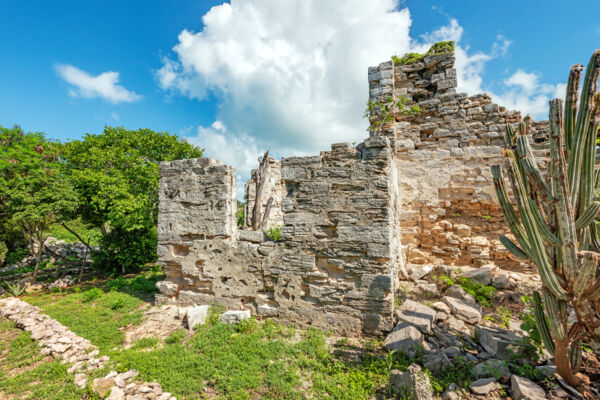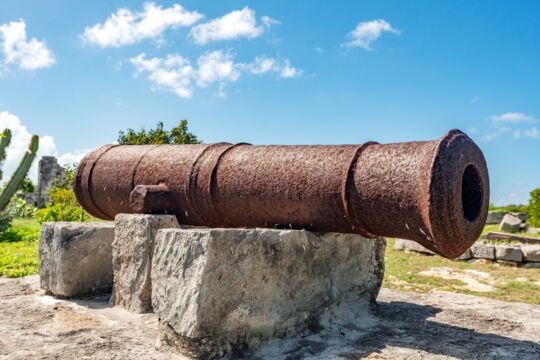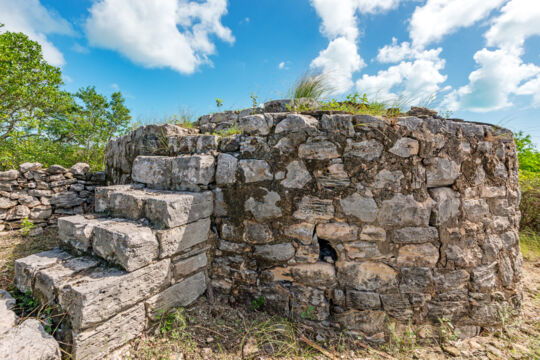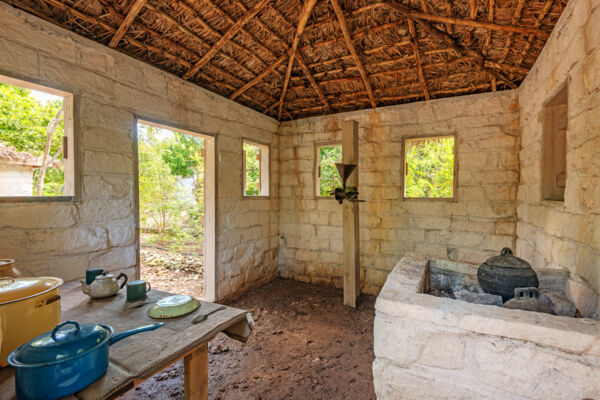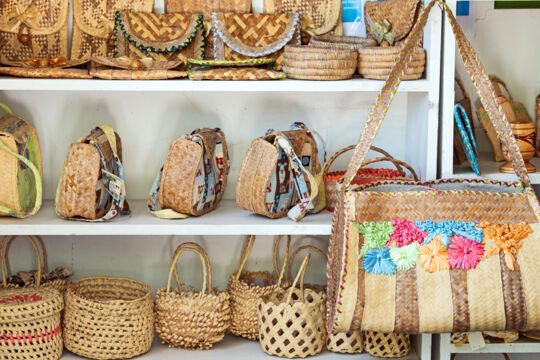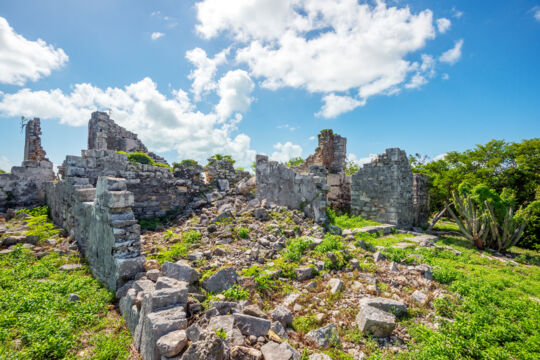Cheshire Hall Plantation
Leeward Highway, Providenciales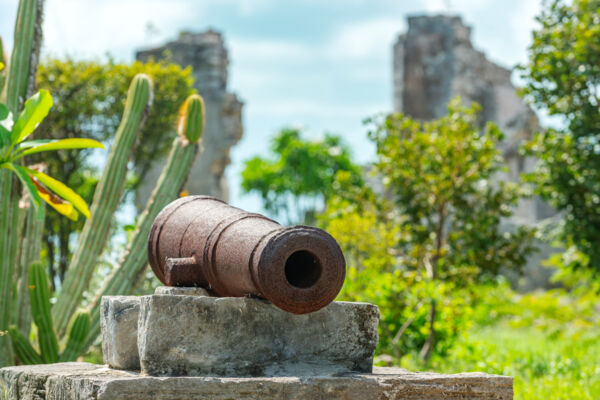
Cheshire Hall Plantation is a ruined late 1700s cotton plantation and the top historical site on Providenciales.
This quiet attraction offers an interesting perspective on the Loyalist historical period of the Caicos Islands and how it affected the development of the Turks and Caicos as a nation.
Providenciales supported several cotton and sisal agricultural attempts and plantations, yet Cheshire Hall was by far the most extensive and is the best preserved today. The site is found on a hilltop in central Providenciales near the Downtown region.
Today, there are several ruined buildings to be seen, including the great house, slave quarters, the kitchen, and cotton press bases. Much of the original cotton fields has been overtaken by modern development.
The History of Cheshire Hall and the Loyalists
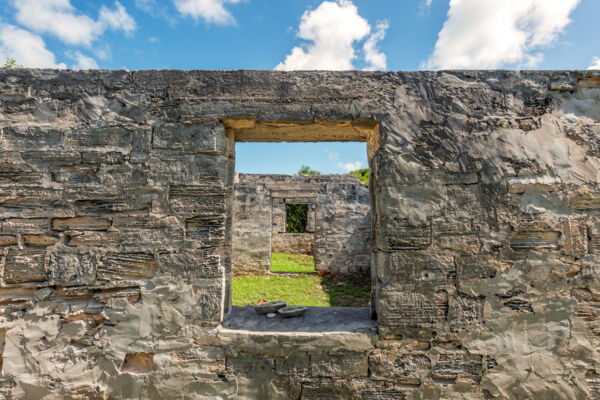
The history of Cheshire Hall begins with Wade Stubbs, a Loyalist planter who lived in Florida. After the American War of Independence (the Revolutionary War), Wade Stubbs was granted land on North Caicos and built Wade’s Green Plantation, which became one of the most successful plantations in the Turks and Caicos.
Encouraged by the success of his brother’s plantation on North Caicos, Thomas Stubbs set up Cheshire Hall in the late 1700s to raise the local cotton variety of sea island cotton. The Stubbs family were originally British, hailing from Gawsworth, Cheshire in England. As such, Thomas Stubbs christened his venture Cheshire Hall.
However, it wasn’t to last. Perhaps the drier soil and poorer water sources of Providenciales eventually led to poor crop yields. Thomas Stubbs gave up on Cheshire Hall and sold it to his brother Wade in 1810.
During their strongest years, Middle Caicos, North Caicos, and Providenciales were very important to the cotton industry in the region. In 1791, half of all cotton produced in the Bahamian Archipelago came from the Turks and Caicos.
Up until the early 1800s, Cheshire Hall was the most important site on Providenciales, and at its height comprised about 5,000 acres (around 2,000 hectares) and employed hundreds of slaves. After a few decades of mild success, the boll weevil insect, soil degradation, and hurricane damage put an end to the cotton industry in the Turks and Caicos.
When Cheshire Hall was built, imports into the Turks and Caicos were quite limited. Rock for the structures was locally quarried and cut, the mortar was made with cement created by burning and crushing local conch shells, and lumber for rafters, doors, and windows was largely sourced from mahogany and pine forests in the Caicos Islands.
Preservation of Cheshire Hall
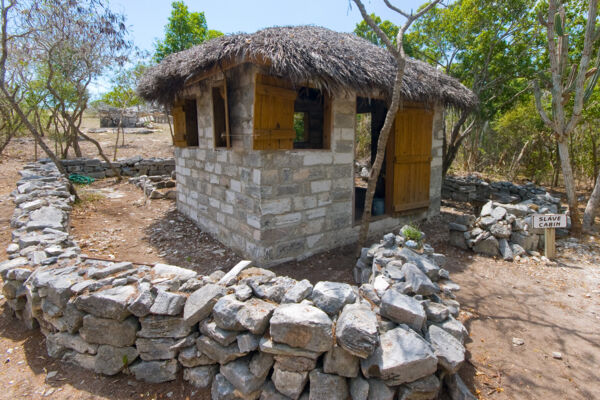
In the past, little was done to preserve the limited number of historical ruins on Providenciales, and although Cheshire Hall is recognized as the most important of the pre-modern constructs left on the island, it hasn’t been immune to vandalism and destruction.
Most of the field walls have been destroyed over time to make way for modern construction projects, and practically all the outlying features such as burial grounds, auxiliary buildings, and field walls have disappeared.
During a project in the 1990s intended to improve access to Cheshire Hall, cut stones that were once part of buildings were used to edge walking paths, instead of simply leaving them or using them to rebuild the walls they fell from. During these works, the cannon near the great house was relocated to Cheshire Hall from a different site in the country.
Today, the Turks and Caicos National Trust operates Cheshire Hall, and maintains scenic walking paths and landscaping.
Visiting Cheshire Hall Plantation
Stone-lined trails wind through about 15 points of interest you can explore, including the Great House, a cotton press base, kitchen, cistern, well, and a small modern reproduction of a slave cabin. Most of the buildings are as they were left after the plantation operations ceased, and are in poor condition. Many structures and ruins are identified by signs with explanations as to their use.
Along the paths, many of the local native plants around Cheshire Hall are named and described, along with information on birds and wildlife common to the area.
Admission and Opening Times
The reception and shop at Cheshire Hall is open weekdays, from 8:30 AM to 4:30 PM. We generally advise visiting early, as wildlife is more active and temperatures are more pleasant.
The entrance fee, which includes a 30-minute tour, is $15. Tours run from 8:30 to 11:30 in the morning and from 2:30 to 4:00 in the afternoon. Admission is free for children under three years of age.
The small shop at the entrance to Cheshire Hall features handmade and authentic Turks and Caicos gifts.
For questions, appointments, and for large groups, please contact the National Trust at +1 (649) 941-5710. Tour may be arranged on Saturdays by appointment.
Cheshire Hall is overseen by the Turks and Caicos National Trust, which is a non-profit organization of tasked with the preservation, maintenance, and operations of several key natural, cultural, and historical sites in the Turks and Caicos.

